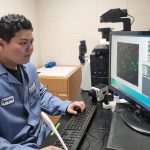Discovery of Mutation-Induced Signaling Bias on the Cell Surface Unveils New Cancer Treatment Avenues

External factors known as “ligands” bind to cell surface receptors called “growth factor receptors” and when they do, it sparks a series of reactions that drive cell growth, tissue development, and wound healing. A phenomenon, known as “signaling bias,” describes the ability of these receptors to preferentially trigger some reactions over others, depending on which ligand is bound to them.
Johns Hopkins University researchers have learned that when a cancer-causing mutation is present in a receptor called EGFR, these preferences are altered in the first step of signaling, right on the cell surface: a discovery that suggests the potential of exploiting these preferences in the battle against cancer.
“We hope that the discovery will guide future efforts to develop therapeutic modalities with utility in the clinic. Drugs meant to ‘unbias’ signaling instead of stopping it will be much less likely to lead to drug resistance,” said study leader Kalina Hristova, a professor of materials science and engineering at Johns Hopkins Whiting School of Engineering and core member of the Institute for NanoBioTechology.
The team’s results appear in Nature Communications.
The mutation “L834R” is often found in lung cancer. Pathogenic mutations in receptors have been typically characterized as “gain of function” or “loss of function” mutations. The Johns Hopkins team shows that the L834R mutation is neither, making it a “change of function” mutation. Thus, therapeutics that target the mutant receptors should alter its function rather than simply inhibit it.
In their investigation, the researchers leveraged a model system called plasma membrane-derived vesicles, which are minuscule structures made of the outer layer of cells and look like bubbles. These vesicles allowed the researchers to focus solely on what was occurring on the cell surface, without interference from other cellular components.
But signaling bias isn’t just relevant in disease; it also affects regular body function. Hristova and her team showed that the EGFR ligands—EGF, TGFα, and epiregulin—exhibit bias when they trigger signals through EGFR, favoring certain responses over others right on the cell surface.
The phenomenon of signaling bias also has implications for human development. In earlier work appearing in eLife, Hristova’s team worked with a different receptor called FGFR and showed that the ligands that control limb development in the embryo cause FGFR biased signaling. She said these results could lead to new ways of combatting the effects of FGFR mutations which are known to cause skeletal disorders.
“It demonstrates how complex and specific some cell responses can be, highlighting just how much more is to be learned,” she said.





